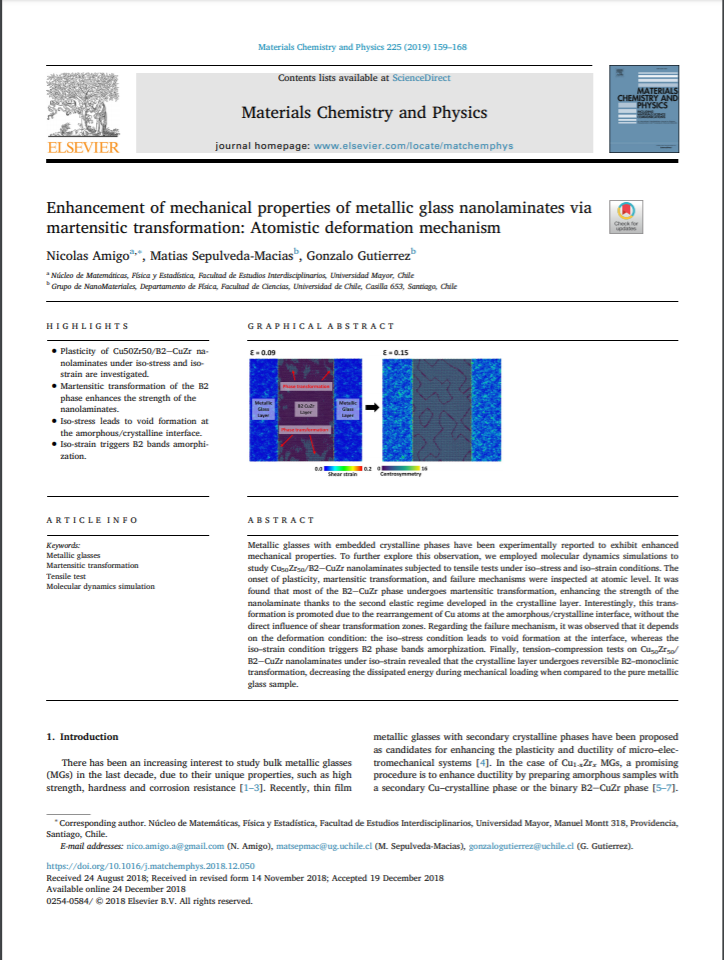Enhancement of mechanical properties of metallic glass nanolaminates via martensitic transformation: Atomistic deformation mechanism

Fecha
2019Autor
Amigo, Nicolás [Univ Mayor, Fac Estudios Interdisciplinarios, Nucleo Matemat Fis & Estadist]
Sepúlveda-Macias, Matias
Gutiérrez, Gonzalo
Ubicación geográfica
Notas
HERRAMIENTAS
Acceda a títulos restringidos
¿Cómo descargar?Resumen
Metallic glasses with embedded crystalline phases have been experimentally reported to exhibit enhanced mechanical properties. To further explore this observation, we employed molecular dynamics simulations to study Cu50Zr50/B2-CuZr nanolaminates subjected to tensile tests under iso-stress and iso-strain conditions. The onset of plasticity, martensitic transformation, and failure mechanisms were inspected at atomic level. It was found that most of the B2-CuZr phase undergoes martensitic transformation, enhancing the strength of the nanolaminate thanks to the second elastic regime developed in the crystalline layer. Interestingly, this transformation is promoted due to the rearrangement of Cu atoms at the amorphous/crystalline interface, without the direct influence of shear transformation zones. Regarding the failure mechanism, it was observed that it depends on the deformation condition: the iso-stress condition leads to void formation at the interface, whereas the iso-strain condition triggers B2 phase bands amorphization. Finally, tension-compression tests on Cu50Zr50/B2-CuZr nanolaminates under iso-strain revealed that the crystalline layer undergoes reversible B2-monoclinic transformation, decreasing the dissipated energy during mechanical loading when compared to the pure metallic glass sample.
URI
https://doi.org/10.1016/j.matchemphys.2018.12.050http://repositorio.umayor.cl/xmlui/handle/sibum/6429
Coleccion/es a la/s que pertenece:
Si usted es autor(a) de este documento y NO desea que su publicación tenga acceso público en este repositorio, por favor complete el formulario aquí.